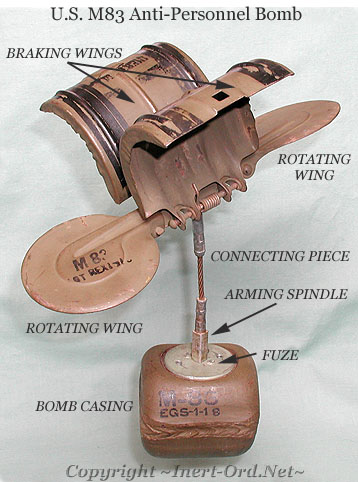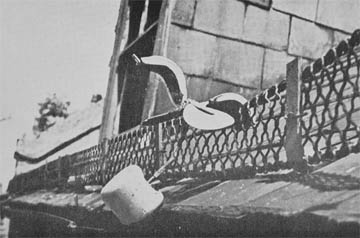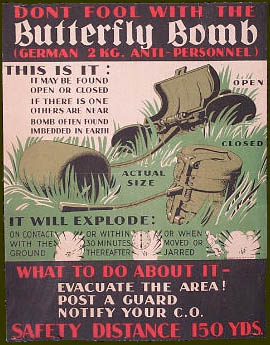
It is an almost identical copy of the infamous German SD-2 Splitterbombe ("Splinter Bomb"), commonly known as the "Butterfly Bomb", used during WWII.
The SD-2 was used against British cities, dropped along with other high explosive and incendiary ordnance. A small weapon (about 2kg), its primary purpose was as a booby trap device, to slow the progress of damage control after a bombing raid.
A common configuration for the SD-2 was to load them into a container, holding 23, which resembled a 50kg bomb. When dropped from a plane, the container immediately opened, emptying its lethal cargo.
There were five different kinds of fuze that could be used for the SD-2 including impact, air burst, long delay and anti-handling.
(The M-83 shown has a 2-function selectable fuze.)
The bomb has a lethal radius of up to 70 yards.
 After the bomb is released, a torsion spring pops the wings open. Air drag pulls that
assembly to the end of the connecting piece where it locks and proceeds
to rotate, unscrewing the threaded arming spindle. Once the spindle completes
about 10-turns, it arms the fuze. Once armed, there is no way to defuze
the bomb and must be destroyed in place.
After the bomb is released, a torsion spring pops the wings open. Air drag pulls that
assembly to the end of the connecting piece where it locks and proceeds
to rotate, unscrewing the threaded arming spindle. Once the spindle completes
about 10-turns, it arms the fuze. Once armed, there is no way to defuze
the bomb and must be destroyed in place.


